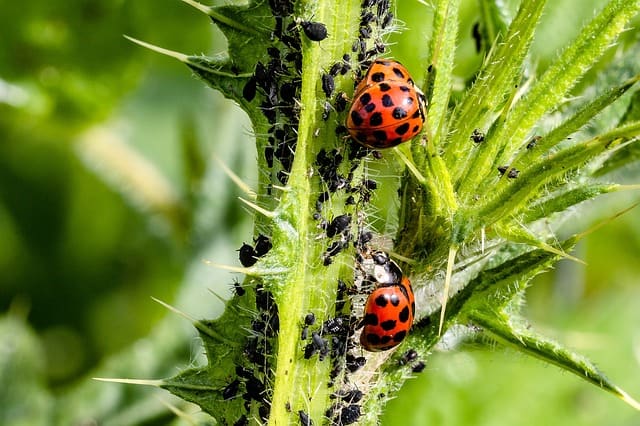If you have decided that organic gardening is for you, it’s important that you stick to your conviction. There is one thing that be a real test of this; dealing with pests. Many organic gardeners claim that the strength and health of plants wards off any pests. While creating healthy plants is important to organic pest control, it does not always guarantee a pest-free zone.
If you are going to stick to your organic gardening principles, you need to make sure that you have plans in place to ensure that your plants are not ruined by the pests which can be found in many yards in the US.
Common pests you may find in your yard
There are many different pests which are common in the US. Depending on where you live, you may come across the following invaders.
- Slugs, which tend to be the most common problem when it comes to yard pests. They can destroy your plants if you let them.
- Squash bugs which can eat away at any type of squash in summer and winter.
- Aphids which are very common but can be dealt with fairly easily.
- Squash vine borers which are usually dealt with using crop rotation and the planting of resistant varieties of squash.
- Japanese beetles which like a moderate climate and do not deal well with extremes of temperature.
- Tomato hornworms which are often simply picked off crops because they are easy to spot.
- Cutwoms which can damage young seedlings if the plants are not protected.
- Grasshoppers, especially in areas where there is heavy rainfall.
If you have these, or any other, unwelcome pests in your yard you need to deal with them. The trick is to do so while maintaining your organic principles. There are several tips that may come in useful.
1. Use beneficial insects and other creatures
Not every insect that enters your garden is a pest. Insects such as ladybugs and damsel bugs eat the creatures which are attacking your plants. Attracting these beneficial insects to your garden is one of the best forms of pest control.
It’s not just insects that can help either. Many organic gardeners use animals such as chickens and ducks to eat pests such as slugs. Although you do need to be careful that these protectors do not have direct access to the plants you are caring for. They can do damage themselves if they do have access.
2. Spread Diatomaceous Earth on the ground
Diatomaceous Earth is deadly to insects but is not harmful to people or the environment. When insects come into contact with this substance their exoskeleton is damaged and they begin to dehydrate. This results in death.
3. Choose the right plants for your yard
It helps if you choose varieties of plant which are resistant to pests. For instance, “butternut” and “royal acorn” tend to be amongst the best types of squash to grow. Choosing these plants may not eradicate every pest problem, but it’s a good start. You will tend to have less problems, and end up with a healthier crop.
4. Use barriers to protect plants
It makes sense that one of the best ways to protect your plants from pests is to put a physical barrier in the way. This is much the same as protecting yourself from mosquitoes by wearing long clothing.
Floating row covers are one of the most used forms of protection. As the name suggests, the covering is used to protect young plants as they grow. Fabric is used to cover the plants. It’s anchored to the ground, to prevent pests from getting in, and it rests on top of the plants or on metal hoops which are installed. If plants are flowering, it’s normally a good idea to remove the covering, so that pollinating insects can get access to the flowers.
5. Use intercropping techniques
Often, people choose to place the same plants next to each other in a row. Intercropping involves the placing of different plants next to each, so that plants are mixed across the area. Using this technique seems to make it more difficult for insects to find the plant that they want to munch on.
The reason for this is not certain. However, it could be that insects visit plants a few times before they properly identify them. Having plants of the same type together makes this easier for them to do.
6. Pick pests by hand
If the pests that are present are easy to see, it may be easy to pick them off plants by hand. Obviously, this can take a lot of time, but most gardeners find that it works. Taking the time to care for plants in this way can produce good rewards at the end of the day, as seedlings grow into healthy mature plants.
You may find that a combination of these tips works best for you. The most important thing is that you make sure pests are dealt with as quickly as possible, before they can do too much damage.
Do not be tempted to resort to using chemical pesticides because you think it makes life easier. They kill beneficial insects as well as bad ones. They are also toxic and can be dangerous if children or pets come into contact with treated plants. It’s also a lot healthier to eat produce that has come from plants grown organically.
If you get the process right, you can have a flourishing organic yard where you can grow a lot of your own fruit and vegetables. Using these products when you are cooking gives you complete peace of mind. You know that the fruit and vegetables you are including in your family’s meals have been grown without the use of chemicals and that they are fresh from the plant. This is why it’s worth taking the time to follow the tips mentioned in this article and protect your yard from insects the organic way.






